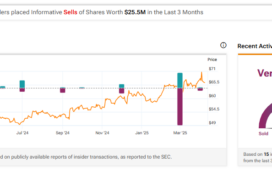Investing.com –Hannover Rueck SE (ETR:) reported strong second-quarter results, primarily fueled by its property & casualty reinsurance (P&C Re) division.
“An all-round beat led by P&C Re underwriting while the FY guidance has been maintained as expected,” said analysts at RBC Capital Markets in a note.
The financial services provider beat expectations across all metrics, showing improvement in its combined ratio compared to the previous quarter. Both the property & casualty and life & health reinsurance segments reported positive performance.
The company posted a net income of €603 million, exceeding consensus estimates by 13%. This translated to a strong return on equity of 22.4% for the first half of the year. Investment income came in at €511 million, slightly ahead of expectations, RBC said.
The P&C Re segment delivered an EBIT of €532 million, surpassing consensus estimates. The combined ratio stood at 87.6%, improving to 85.1% when adjusted for large loss variance.
The L&H Re segment significantly outperformed, with EBIT reaching €320 million. Hannover Rück’s solvency ratio climbed to 276%, comfortably above its target range.
Despite higher-than-expected large losses in the quarter, Hannover Rück maintained its full-year guidance, reflecting confidence in its growth trajectory.
The company expects a P&C combined ratio below 89% and an L&H reinsurance service result of at least €850 million.
The P&C Re segment showcased strong revenue growth, outpacing consensus by 9%. While large losses exceeded the quarter’s budget, Hannover Rück maintained its practice of fully reserving the budget.
The L&H Re segment continued to benefit from positive experience variance.
Renewal volumes demonstrated healthy growth, with risk-adjusted rates increasing by 1.3%. Earlier renewals also reflected solid performance.
RBC Capital Markets values Hannover Rück at €283 per share, with an ‘outperform rating’. This valuation is based on a sum-of-the-parts approach and implies a 14x P/E.
Potential risks include exposure to natural catastrophe losses, large exceptional losses, shifts in the P&C rating cycle, inflationary pressures, and the impact of a recession.





